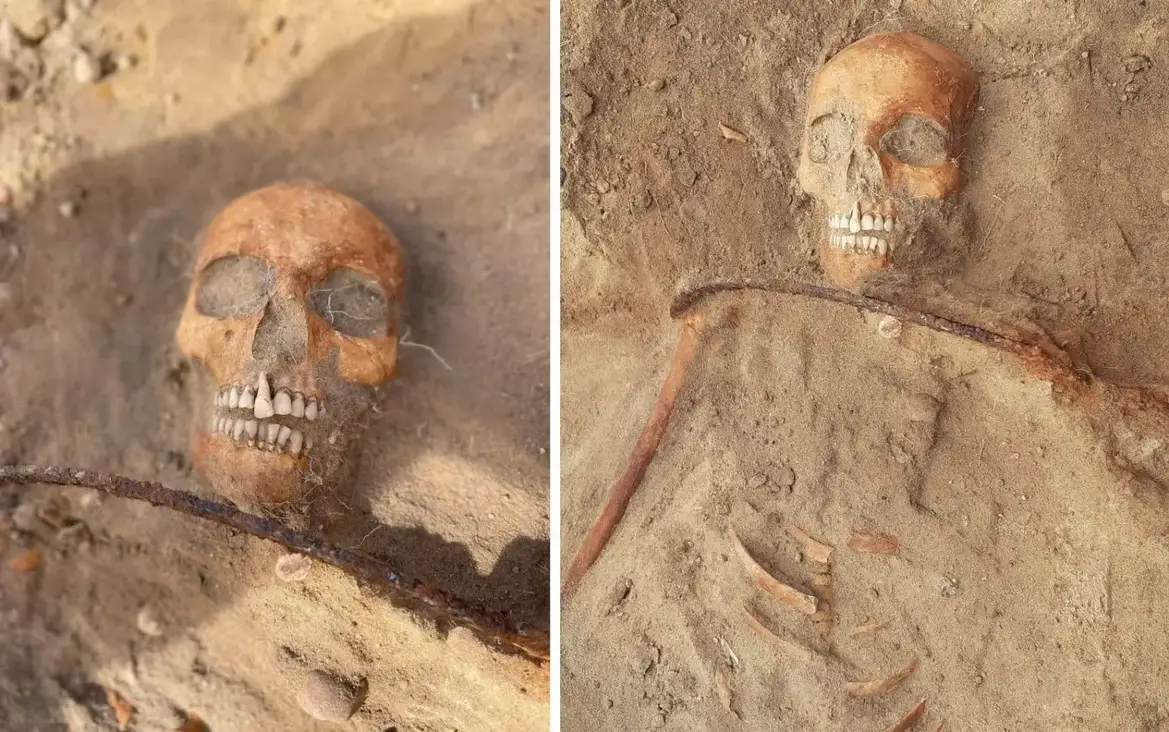Archaeologists from the Toruń Nicholas Copernicus University have found a grave from the 18th century, containing a ‘female vampire’ buried with a sickle over the neck to prevent her ascension to vampirism.
The concept of a blood-sucking spirit, or demon consuming human flesh has been told in the mythology and folktales of almost every civilisation throughout the centuries.
One of the earliest vampiric depictions stems from cuneiform texts by the Akkadians, Samarians, Assyrians and Babylonians, where they referred to demonic figures such as the Lilu and Lilitu.
During the late 17th and 18th century, the folklore for vampires as we imagine became rampant in the verbal traditions and lore of many European ethnic groups.
They were described as the revenants of evil beings, suicide victims, witches, corpses possessed by a malevolent spirit or the victim of a vampiric attack.
During the 18th century, vampire sightings across Eastern Europe had reached its peak, with frequent exhumations and the practice of staking to kill potential revenants. This period was commonly referred to as the “18th-Century Vampire Controversy”.
Archaeologists found the burial near Bydgoszcz, a city in northern Poland. An anthropological study revealed that she had protruding front teeth, suggesting that her appearance may have led superstitious locals in the 17th century to brand her a witch or vampire. In fear of her ascension, a sickle was placed around her neck, while a padlock was tied to the toe on the left foot.
Referring to the sickle, Professor Dariusz Poliński from Nicholas Copernicus University explained that the position would have decapitated the individual should they try to rise from the grave.
Despite the morbid nature of the grave, the woman was buried with a silk cap on her head which was a luxury commodity in the 17th century, suggesting that the deceased held a high social status.
Previous burials have been found in Poland showing anti-vampiric customs, such as several skeletons with severed heads unearthed in Kraków, or a burial in Kamie Pomorskie which had a brick forced in the mouth, however, this is the first example in Poland where a sickle has been positioned to prevent ascension to vampirism.
Nicholas Copernicus University
Header Image Credit : Miroslav Blicharski / Aleksander






